SEO and SEM are sometimes mistakenly called interchangeably. Businesses can use them to reach their target audience via search engines such as Google and Bing.
SEO is a critical marketing approach for those wanting to increase their online visibility and drive website traffic. However, it can be challenging to manage if you don’t know how to combine SEO with Search Engine Marketing (SEM).
Although they may sound identical, they are two distinct methods of appearing in the SERPs (search engine result pages).
Once you have been shown the difference, it will be easy to see. This guide will give you a clear understanding of each definition and its differences. That is what we’ll cover.
- SEO vs. SEM: What’s the Difference?
- What’s SEO?
- What’s SEM?
- What are the similarities?
- SEO vs. SEM: What are the Differences?
- SEM vs. SEO: Which Should You Use?
- SEO vs. SEM: What’s the Difference?
Understanding the terminology and meaning of each term is essential before you begin to plan your strategy to improve your company’s online visibility. However, it can lead to failure and hinder the approval of budgets and strategies.
Let’s make this simple for everyone.
These are the two main areas of search marketing:
SEO: An organic approach to appearing in search results.
SEO – A paid approach to appearing in search results.
It is essential to know that SEM definitions are often contradicted and disputed. For example, according to backlinks, SEM is the broadest search channel that includes both organic and paid searches.
SEO refers to organic search. SEM, however, is paid.
However, this hasn’t always been true.
Danny Sullivan (formerly of Search Engine Land) was the first person to use the term SEM for any business’s efforts to drive traffic from search engines.
However, over time, many industry professionals have changed their perceptions, and now SEM is understood to mean search engine advertising SEO almost covers all organic efforts.
We must not forget the speed at which these channels have developed since 2001, 19 years ago. They are becoming more distant and more efficient than ever before. SEO and PPC are often carried out in different departments within companies today. These teams could have operated together if they had been smaller in the 2000s.SEM, for us, is the umbrella term that covers search advertising techniques, while organic identifies with SEO.
Let us examine these in further detail, specifically, what makes them different.
What’s Search Engine Optimization?
Optimizing a website search engine improves your site’s organic
ranking on search engines like Google, YouTube, and Amazon.
Because of the potential for higher search engine rankings, SEO can drive targeted traffic directly to your site.
That can eventually result in more clients and leads.
For example, every month, 22,000 people search Google for your product or service.
You can rank #1 on Google for this search term, and that could mean a few thousand
people are visiting your website every month.
SEO is usually:
High-quality content creation
Monitor your site’s technical health
Link building from other sites
Ensuring your site loads quickly
It is simple to navigate and use.
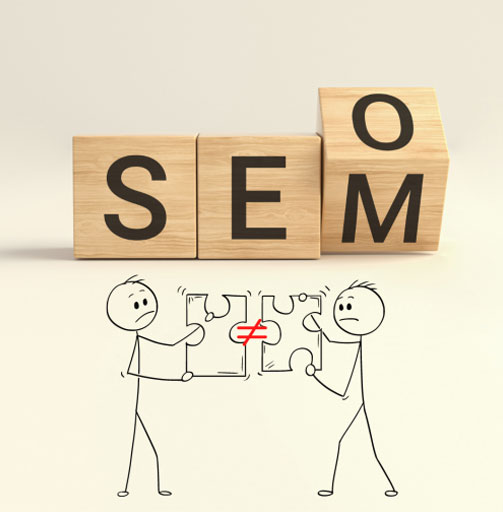
Four Core Pillars for SEO
Marketers optimize their websites with SEO. It includes technical SEO, off-page optimization, and content creation. The objective is to obtain the best results for a query that should rank high on Google.
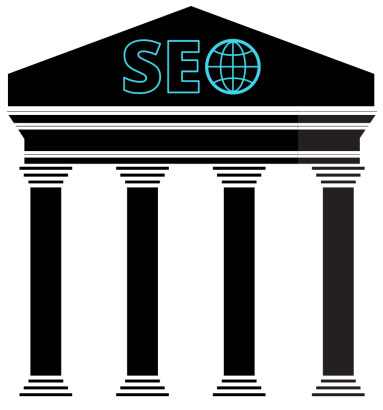
Let us examine each core pillar:
Technical SEO – Technical SEO focus on improving a website’s technical structure and works to improve site speed, mobile-friendliness, and crawlability as well as security and indexing (just a few of the many benefits)
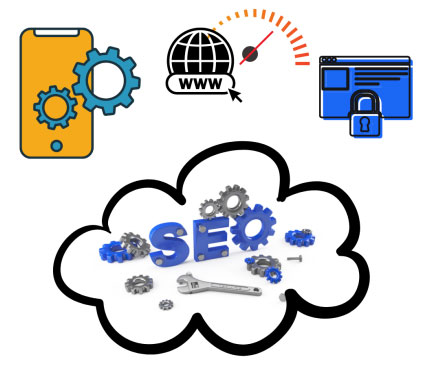
On-page Search Engine Optimization – Search engines can easily understand your web pages if certain elements are optimized, including ng title, H1, and image alt tags.

Content – Google considers content one of the most important ranking criteria. Without great content that matches searcher intent, it won’t be easy to rank high in the top spots. Content is more than just copywriting.

Off-page SEO – This is authority building. It includes link building and other strategies. This strategy focuses on increasing trustworthiness and authority in search engines and connecting the website to relevant and high-authority sites. As a result, Google will rank websites trusted by users higher in search engines’ results. You can build trust and authority through link building, PR, or other similar strategies.
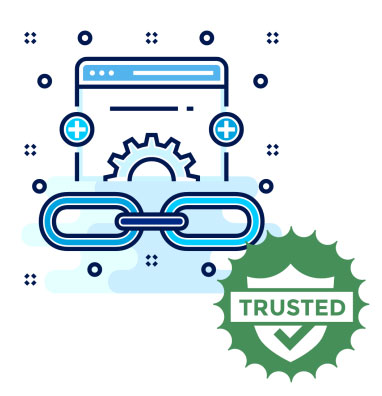
A combination of these four pillars is necessary for an SEO strategy to succeed. It often requires working with experts in these areas to develop a solid plan that propels your success.
What's SEM?
Search Engine Marketing employs paid strategies to improve search engine visibility, called PPC (pay per Click).
Instead of using organic SEO tactics to rank websites, SEM uses PPC advertising platforms such as Google ads and Microsoft Ads to reach your target audience.
This tactic involves optimizing paid ads to manage an account to increase conversions.
SEMs usually start a campaign by conducting extensive keyword research and competitor insights (which can be done with tools such as the PPC advertising toolkit). It allows them to target their audience with targeted campaigns that promote their products or services.
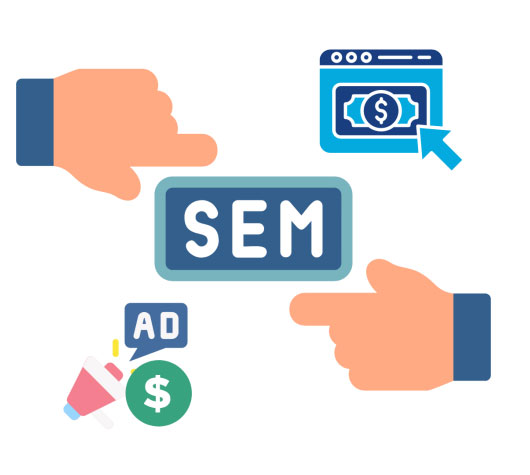
These campaigns include
Search Ads Text ads
Shopping Ads
Display Ads
Gmail Ads
YouTube Ads
These are the different formats that Google Ads offers — each of which can be used to help you reach your target audience.
When users search for terms the advertiser used to run ads against; they will often see custom ads. Sometimes, users may see shopping ads. The business pays for each click on an ad.
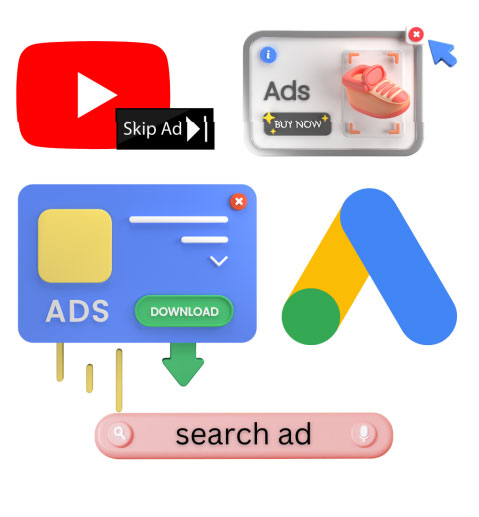
SEM Benefits
SEO can take months before you start seeing actual results. On the other hand, SEM can convert clicks into conversions in just days.
You can control when and to whom ads are displayed. This channel is ideal for testing new strategies and sending traffic to a sale. You can also use it to accelerate traffic during quiet periods.
SEO and SEM should not be viewed as distinct channels. Instead, they should be seen to be part of a more comprehensive digital strategy that increases search engine visibility, traffic, and sales through search engines.
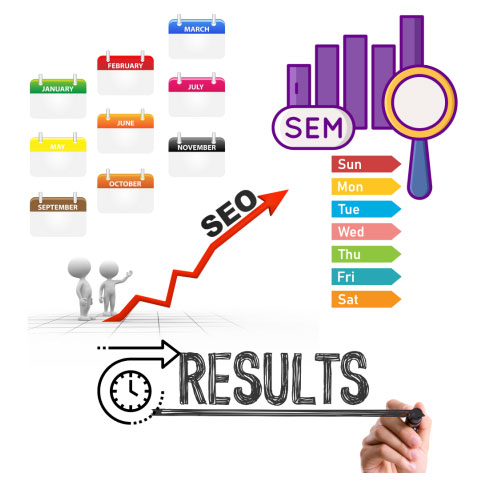
SEO vs. SEM: What are their similarities and differences?
Let’s now examine the commonalities among these channels, which can be confusing.

SEM and SEO both:
Target keywords can help increase the visibility of your website on search engines.
You can also optimize your website to match those keywords.
You can drive your website to more relevant and quality traffic. Both methods encourage users to click through to your site, regardless of whether they are organic or paid.
It will help you better understand your audience. Both strategies will work if you can gain a deeper understanding of your audience.
Keyword research is an excellent way to target keywords. Both require keyword research to identify the target audience for your competitors.
Testing and optimization are essential. Both must be continuously monitored and improved to ensure long-term success and a solid ROI.

SEM vs. SEO: What Are the Differences?
Let’s look at the differences.
Seeks Marked Ads in the SERPs
Paid placements can be distinguished by the “Ad” icon in SERPs. Unfortunately, this icon isn’t in organic listings, so organic and paid results will look completely different.
Paid ads let you add ad extensions (ad extensions) to a text search (text ad). These extensions can include site links, callouts, and phone numbers.
Organic rankings can offer rich snippets. With ad extensions, you have greater control over how and when they are displayed.
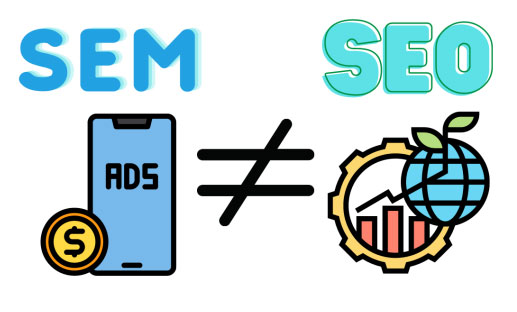
You can pay for every click and impression you make with SEM.
Advertisers are charged for each click a user makes using an SEM campaign. CPC = cost per click, or CPM = cost per thousand impressions depending on your created campaign. Users who click on organic listings ranked by SEO don’t get paid.

SEO Can Provide Almost Instant Results. SEO is not.
You can view the results of an SEM campaign (paid) in seconds. After your ads have been approved and your bids are acceptable, they will immediately appear in search results.
SEO can take a while if there isn’t much competition. It can take months to see organic results after launching an SEO strategy.
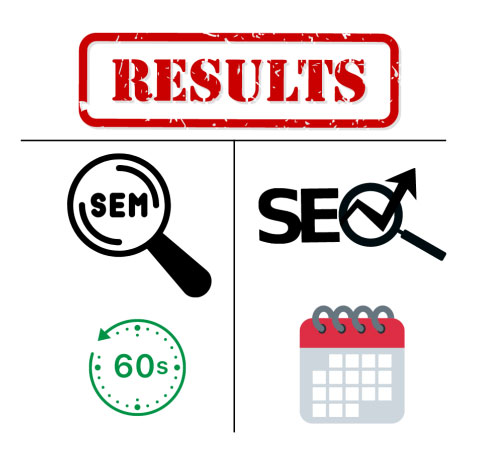
SEO Delivers Cumulative Results
Another important point. SEO is a valuable asset that you can use over time. Your return should be continuous. Your strategy will continue to grow and produce lasting results.
If you invest in SEM, this is false. Once your ads have finished running or are on pause, visibility will stop.
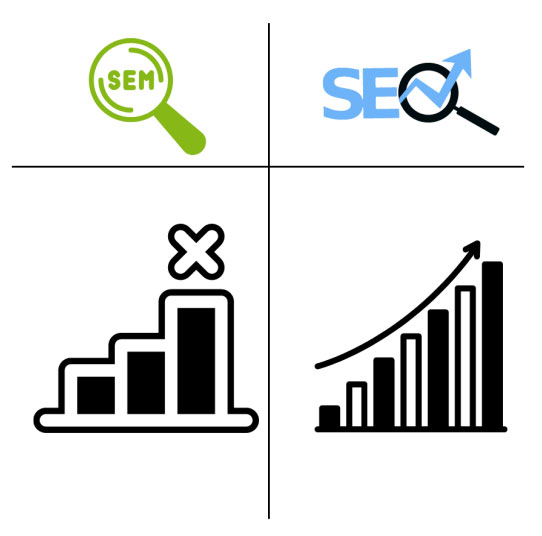
SEO is more difficult to refine and test than SEM
Paid advertising is subject to testing. To ensure your tests are successful, you will need to modify your landing page content, revise your copy and target new audiences.
That is possible with readily available data. You can make changes quickly and receive your results in no time.
It isn’t easy to test the algorithm in the same way that SEO does because of its complexity. Still, testing is an essential part of any solid SEO strategy. It isn’t as common as PPC, however.
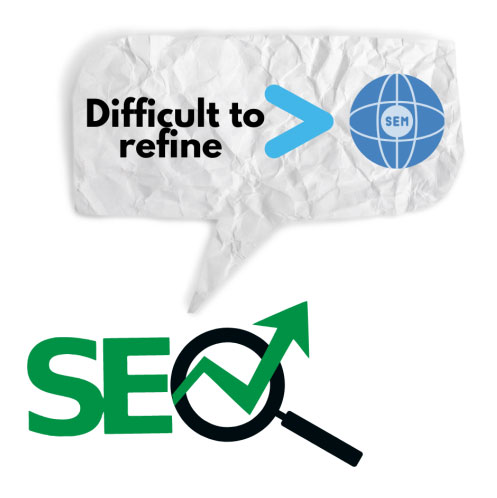
SEO vs. SEM: Which Should You Use
It all depends on:
It is crucial to understand your goals. SEM is the right choice if you want to increase sales, get traffic quickly to your website, or launch a new product or service. However, SEO is the best option if you want to grow your business long-term.
Your current performance. You can increase your organic visibility with SEM.
Your margins. In certain situations, SEM may be a waste. In these cases, SEO will deliver greater returns. However, considering the CPC (cost per Click), you will have to pay when using the PPC keyword searching tool is essential.
Consider the lifetime value of your customer. Higher LTV (Customer Lifetime Value) means higher click costs when you use SEM. Conversely, SEO can be more effective if the LTV value is lower.
Most businesses must incorporate SEO and SEM in their search strategies.
Combining these two powerful marketing channels can create wealth for potential
clients looking for similar businesses.
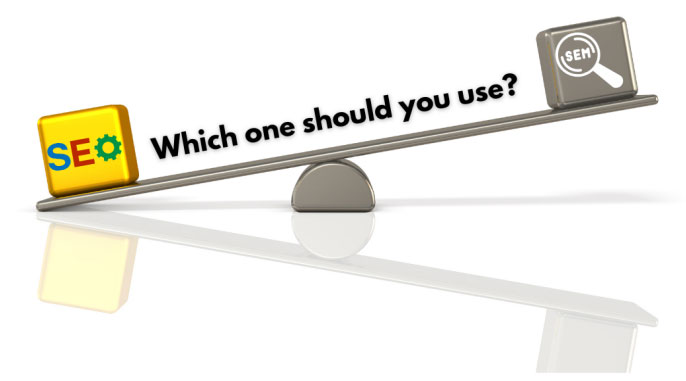
Combining SEO and SEM
Combining SEO with SEM allows you to connect the channels and:
Data insights from your SEM strategy can help you improve your SEO strategy. This information includes insight into conversion rates, keyword performance, and traffic opportunity estimates. SEM can be viewed as a testing ground for SEO.
Remarketing campaigns can make it easier for your SEO to work harder. This will enable you to reach customers who didn’t convert previously. These customers can be targeted using search ads, display ads, or other methods.
You can combine these two strategies to dominate the SERPs. Be visible in both the ads and organic listings.
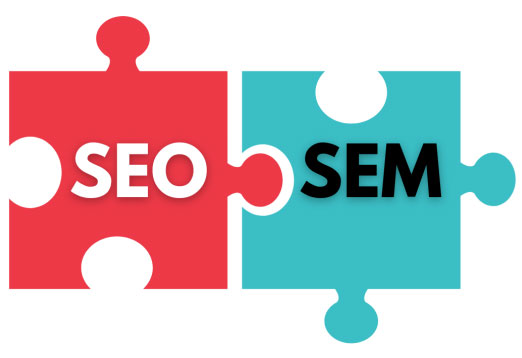
SEO and the SEM of Your Competitor
It is vital to monitor the activities of your competitors. These tools will help you better
understand the strategies and SEO performance your competitors use.
- Organic Research
- Keyword Gap
- Backlink Analytics and Backlink Gap
- Tracking of position
Take a look at the organic rankings of your competitors. Next, create a strategy to outperform your competitors’ SERP placements. Think about the paid activities they are involved in and what keywords they use to drive traffic to their website.
The ability to understand the strategies of your competition can make yours
more efficient.
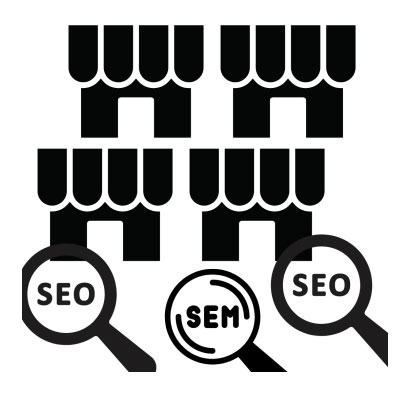
Conclusion
SEO and SEM are often confused or seen as two completely different channels.
Understanding the importance of each component is an integral part of any marketing strategy. Next, you need to know how each can be used together to gain success and a competitive edge.


